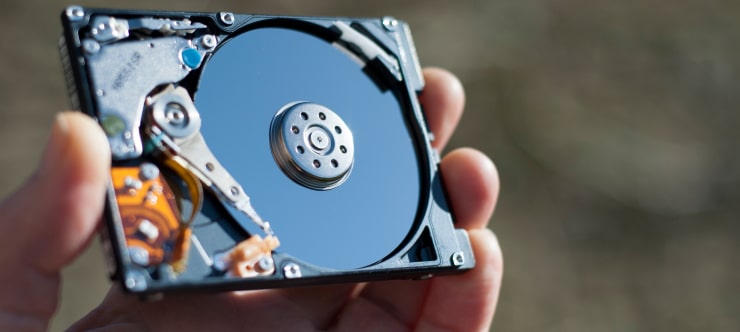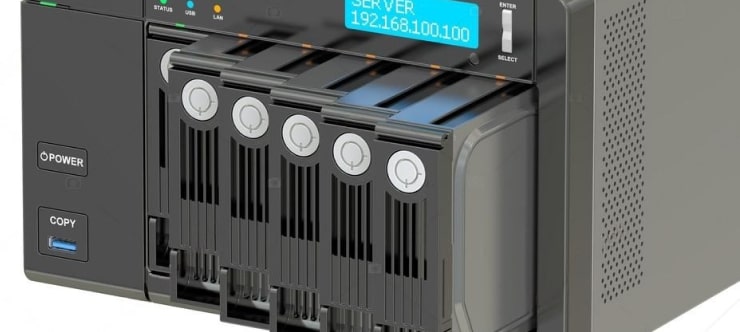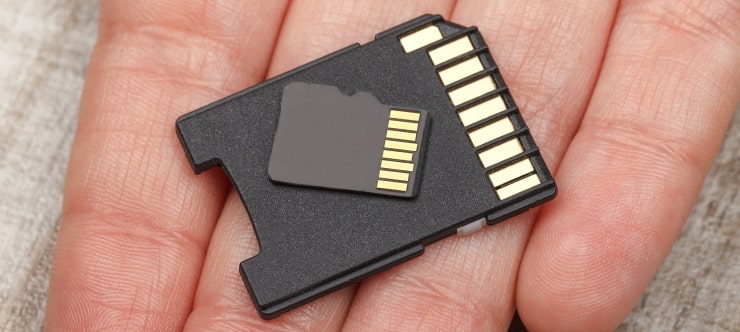Why You Should Have a Server Data Recovery Plan

I think there's an issue with my storage device, but I'm not sure
Start a free evaluationA server data recovery plan is one of the several ways you can protect business continuity and assure the recovery of your database data. After all, data is the lifeline of every organization. And the database is one of the most sensitive and valuable assets of a business.From transactions to cash flows, from number-crunching to research and development, data plays a tremendous role in making organizations grow.Businesses of all types and sizes need to store vital information in databases. And the most popular database is SQL Server. As a centralized server for housing your organization’s server, an SQL server never fails to deliver a big impact.However, SQL Server users have a huge problem on their hands if their server crashes. In such cases, quickly recovering server data becomes a top priority, all while avoiding any data loss.As a server crash cannot be predicted, then being prepared is better than being caught off guard. A Server Data Recovery Plan can save time and money by quickly overcoming data loss, database, and operational downtime.
What is an SQL server?
An SQL server is an essential tool for managing data in today's software applications. It is a relational database management system (RDBMS) that uses Structured Query Language (SQL) to store and retrieve data as requested by other software applications. SQL servers are designed to handle large amounts of data and can be used in enterprise-level applications.SQL servers provide a robust way to manage data in a structured manner, allowing users to create, read, update, and delete information stored in the database. This allows for efficient and effective storage and retrieval of complex data sets. Additionally, SQL servers can be used to perform complex queries on databases quickly and efficiently, making them invaluable for analyzing large datasets and gaining valuable insights from the information stored within them.A Disaster Recovery Plan (DRP) should be tailored to the specific systems of an SQL server in order to keep businesses protected and running in the event of a system or data loss. This includes measures to ensure the integrity of stored data, backups on separate systems, and processes for quickly recovering the SQL server post-incident — thus minimizing disruption and damage. And of course, regular testing of recovery procedures should be conducted to guarantee the DRP’s efficacy when needed.
What is a Server Data Recovery Plan?
Server recovery plans are the set of documented step-by-step guidelines that server users must follow when a server goes down or suffers server data loss.
A Server Data Recovery Plan is a documented guideline to overcome server crashes with minimal or any data loss or operational downtime.
These server recovery plans are developed alongside server backup strategies. A structured approach is established according to different scenarios in order to recover server databases without any server data loss.A Server Data Recovery Plan, whether for SQL servers or other database servers, must go through possible downtime scenarios where the recovery time is evaluated. This simulation can potentially save days when it comes to the inevitable server crash.Following the proper course of action described in a Server Recovery Plan can impact recovery time and minimize the damage.For instance, the difference lies between restoring a full server backup from slow file transfer protocol (FTP) storage that takes days to boot up, to a backup server that is already synced daily with a Rsync server and requires only a few minutes.Instead of an impromptu response that will not fix the issue, the Server Recovery Plan is important to speed up response time to a database disaster recovery.
How does the server recovery plan work
Server recovery plans work by following server backup strategies. Recovery is easier and faster once involved people know their assigned role and steps to take in each scenario.One needs to ensure that server backup is taken immediately after the server crashes. This will help bring back critical server information in time and minimize business disruption.A Server Data Recovery Plan should be tailored to each business type and size. But in general, the following steps should be included:
Step 1. Define a primary goal and recovery priority
The first step is to determine what you need to salvage in case of a disaster. For this, you must also know what kind of disaster your business is most likely to face. For example, suppose you’re in an area with a high risk of an earthquake or hurricane. In that case, you must create a server data recovery plan that takes into consideration these natural disaster outcomes.However, if your biggest risk is because of cyberattacks, then your plan should prioritize having a service-level agreement (SLA) with an incident response service provider.This first step also establishes what you can afford to lose, and then you can create backups based on it. So, if you can’t afford to lose a day of data, you must set daily backups.Keep in mind the 3-2-1 backup rule to increase your data security.

Step 2. Define RTO and RPO
RTO stands for recovery time objective, which is the estimated time your business will require to recover after a disaster. RPO stands for recovery point objective and defines how much data you can afford to lose in case of a disaster.The RTO and RPO can help you achieve your server data recovery plan goal.
Step 3. Establish a recovery team
Assigning roles and a chain of command will help to keep the recovery process organized and faster. This avoids two people making the same thing, speeding up the process, and minimizing downtime.
Step 4. Maintain an updated inventory
It’s important to keep an inventory of hardware, software, and resources. This can help you create an emergency recovery budget as well as define the replacement order.In this step of the plan, you must keep
- The monetary value of the hardware updated
- The purpose of each device and hardware in your company
- Instructions for the replacement of the items in your company
Step 5. Assess risks and identify sensitive data
You must check for vulnerabilities on your SQL server database as well as insider and outsider threats.If your business deals with sensitive information, create a compliant backup system for this data and ensure it’s also secure.
Step 6. Establish a backup worksite location
In case of natural disasters, like hurricanes, floods, or fires, having an off-site backup can help you protect your data and keep the devices safe.
Step 7. Create a disaster response strategy
To guarantee business continuity, create a chain of command, establishing roles for each recovery team member. Then use your goal to define how to restore data.Also, create a disaster communication plan to set how to deliver the information to employees and how much can become public, and at which moment. Here you must work to keep your business's good reputation.
Step 8. Test the server recovery plan and keep it updated
Testing the plan is crucial to avoid it failing when you need it. Also, keeping it updated is the best way to make sure it will work no matter how big your company grows or the type of disaster you may face.As with any type of insurance, the hope is that you’ll never need to resort to it. But with the increase in ransomware attacks worldwide, it is essential to have a server data recovery plan to prevent and remedy any cyber security issue.
Be sure to include server data recovery professionals like SalvageData in your Server Recovery Plan. Determine expert server consultation beforehand in case of prolonged SQL server crashes.
What makes a server crash?
A “server crash” or a “server down” is when there’s a server failure and its users can’t access the system. Servers are not only susceptible to a crash but to file corruption and accidental deletion, among other issues causing downtime.Getting a “Server is Not Responding” or a “Server is Not Found” can be nerve-racking for any business.An SQL server crash might not happen often. However, do you know how to respond to it and avoid further issues? A server recovery plan can help you to overcome it and avoid data loss.A server crash once detected and diagnosed might take one or two hours to get fixed in case of common database downtime issues, for instance. However, complex issues like a hardware replacement or a software reinstallment may require several hours or even a week.
Some common server crash causes are:
- Power Failure: it can be a faulty power cable or power surges
- Network Problem: the issue can be with the server or the client-side (or both), faulty ethernet cable
- Hardware Problem: several parts can get damaged, such as failed disk or failed RAID array controller
- High Server Workload: when the server can’t handle heavy traffic demand
- Configuration Bug: by misconfiguration of applications
- Overheating: insufficient air conditioning to regulate the server room’s temperature
- Virus or Malware: servers infected by hackers are unable to accept client’s requests, besides the risk of a data breach or ransomware-encrypted files
As cybercrimes and data security breaches are becoming more and more sophisticated, a hacking prevention strategy must be part of a Server Recovery Plan.Server data recovery is inevitable when the user doesn’t have any plan in place for the recovery of the server database. Without recovery plans, even minor server crashes can result in severe data loss
Server Recovery Plan: Useful Tips
Following a well-documented server recovery plan can help server users get server data back without losing data or money.
- Test server backup to be sure that it’s working properly before any real server crash.
- Schedule server backup so that server data is captured at regular intervals and nothing gets missed out during server crashes or server data loss.
- Keep server recovery plans ready and handy. A printed copy should be available so that the server users can recover server databases in time even when a server crashes suddenly.
- Create a recovery team and make sure each one knows what they have to do in case of a server crash.
- Have a server data backup strategy to avoid server crashes and server data loss in the future.
- Keep the server room as cool as possible, never let its temperature exceed 77°F. Also, make sure the server room and the servers themselves are clean and dust-free.
- Run periodic tests and personnel drills to ensure the server recovery plan is effective.
Data loss is one of the main causes of business bankruptcy. When critical and time-sensitive data is at risk, rely on server data recovery experts at SalvageData. Request our 24/7 Emergency Services and Remote Data Recovery by highly trained technicians to overcome a server crash as quickly as possible.
Related services
These are the most commonly requested data recovery services. At our headquarters' cleanroom lab, our certified engineers conduct a thorough review of any type of physical storage device, determining if there is logical or physical damage and carefully restoring all of the lost files.ces.

External Drive Data Recovery
We recover data from both external SSD and HDD drives. Rely on certified experts to restore your important files from damaged or corrupted external drives.

Hard Drive Data Recovery
Recover data from all brands of HDD, PC hard drives, and hybrid disks. Our specialists ensure fast and secure recovery for any data loss scenario.

NAS Data Recovery
Recover data from NAS devices, including RAID configurations. Our team handles all types of NAS systems and ensures data recovery with minimal downtime.

RAID Data Recovery
Our RAID data recovery services cover RAID 0, 1, 5, 10, and other configurations. We offer expert solutions for failed, degraded, or corrupted RAID arrays.

SAN Data Recovery
Our team specializes in handling SAN devices from leading manufacturers like Dell EMC, HP, and IBM, ensuring efficient recovery with minimal disruption to your operations.

SD Card Data Recovery
Our recovery experts specialize in restoring data from SD and memory cards. We guarantee quick recovery with a no-data, no-charge policy.

SSD Data Recovery
Our data recovery experts handle all SSD data loss scenarios with advanced tools, ensuring maximum recovery with high-security protocols.

USB Flash Drive Data Recovery
Recover lost data from USB flash drives, regardless of the damage or brand. We offer free in-lab evaluations to assess data recovery needs.
If you’re unsure about which data recovery service to choose, let our team assist you in selecting the appropriate solutions. We understand the anxiety that comes with a sudden drive failure, and we are more prompt in our actions compared to other recovery service providers.



